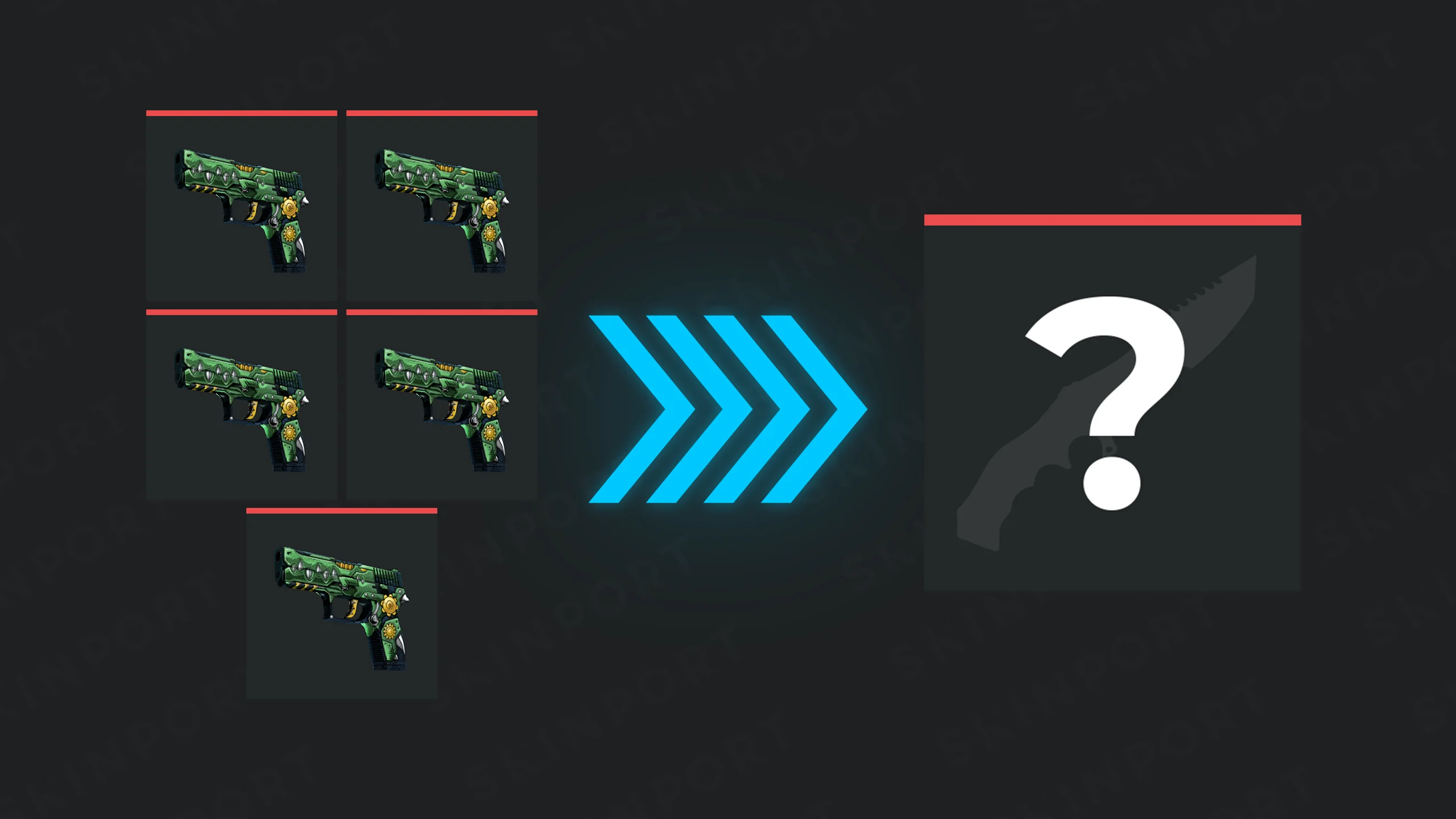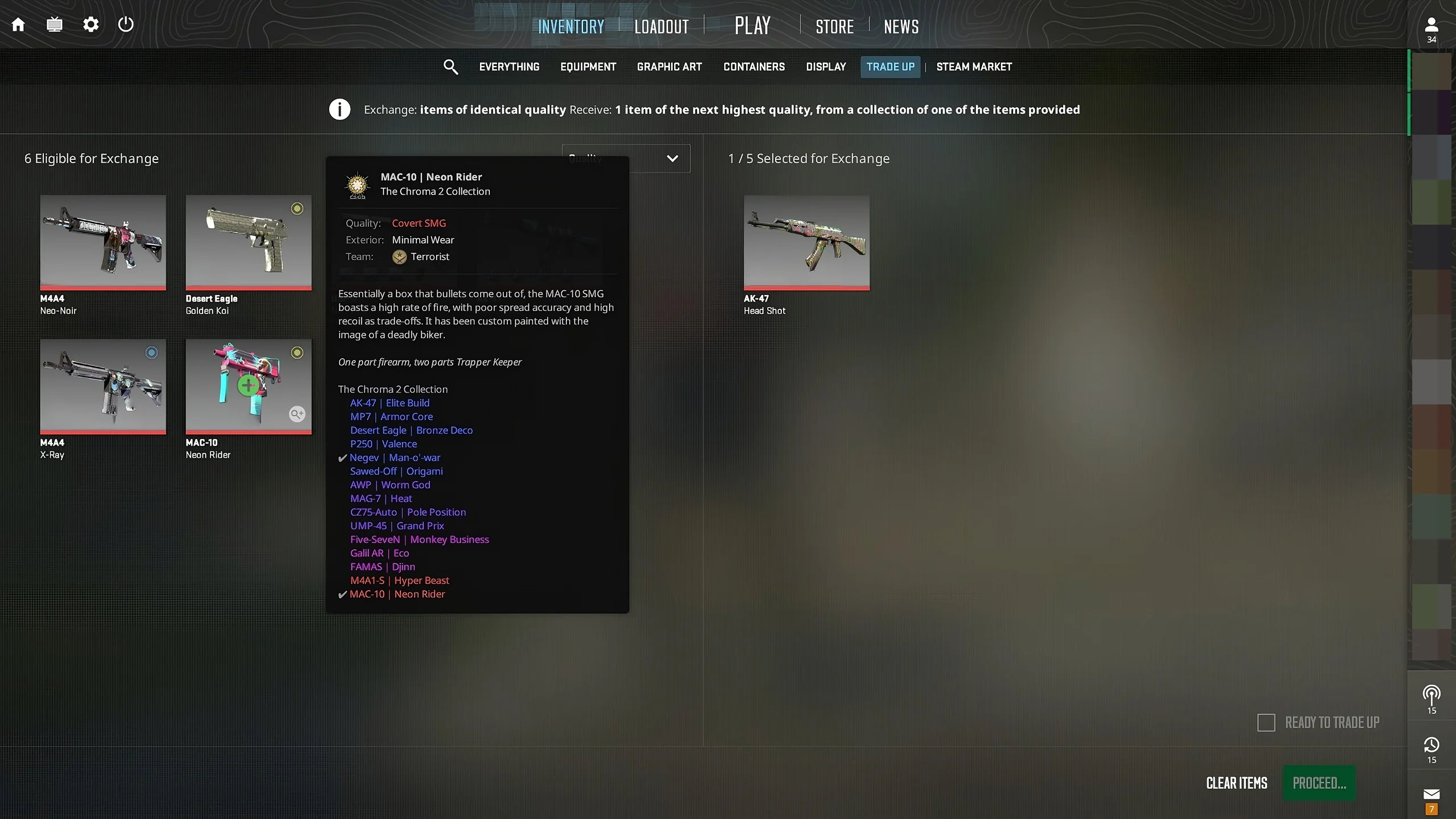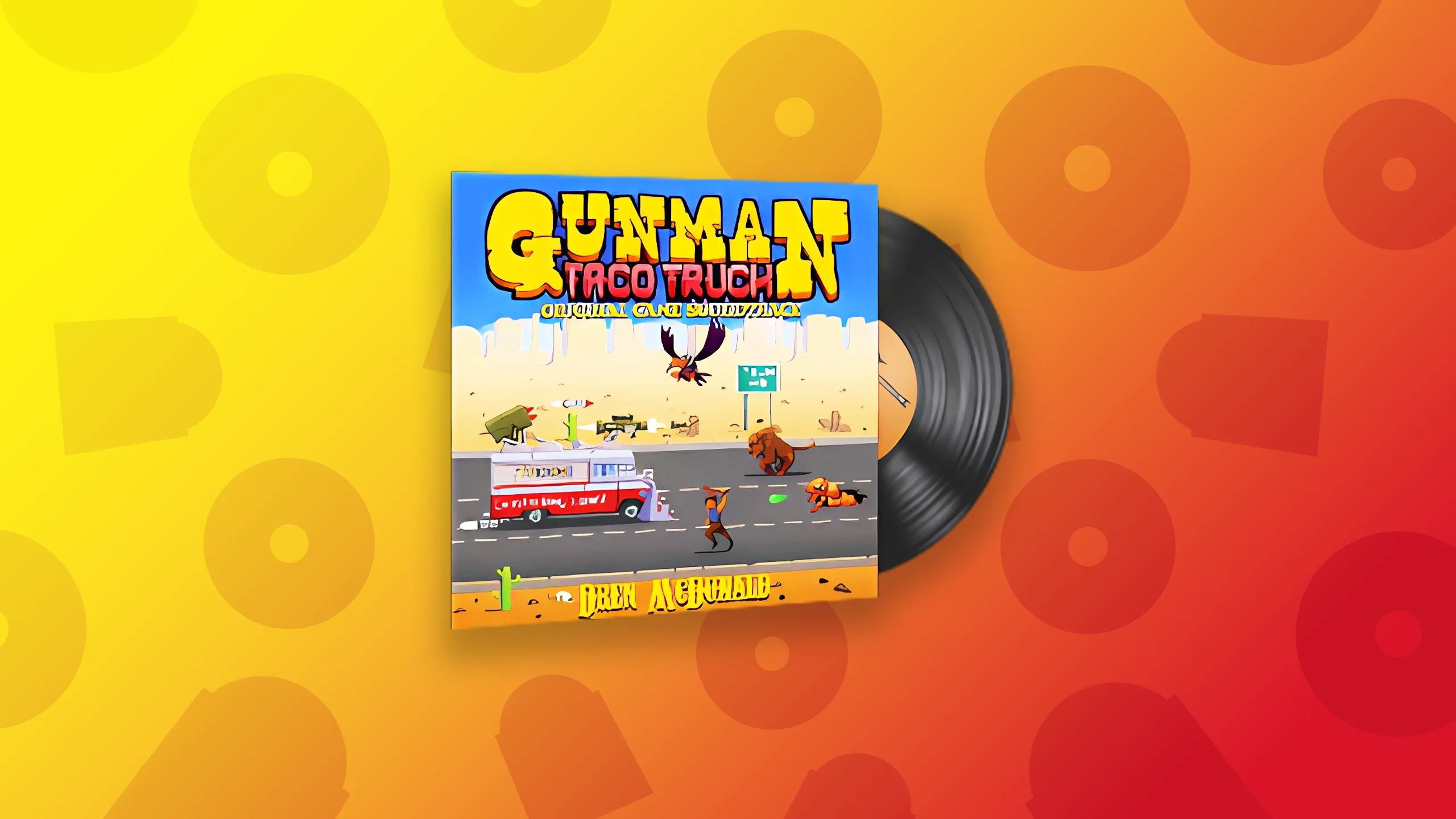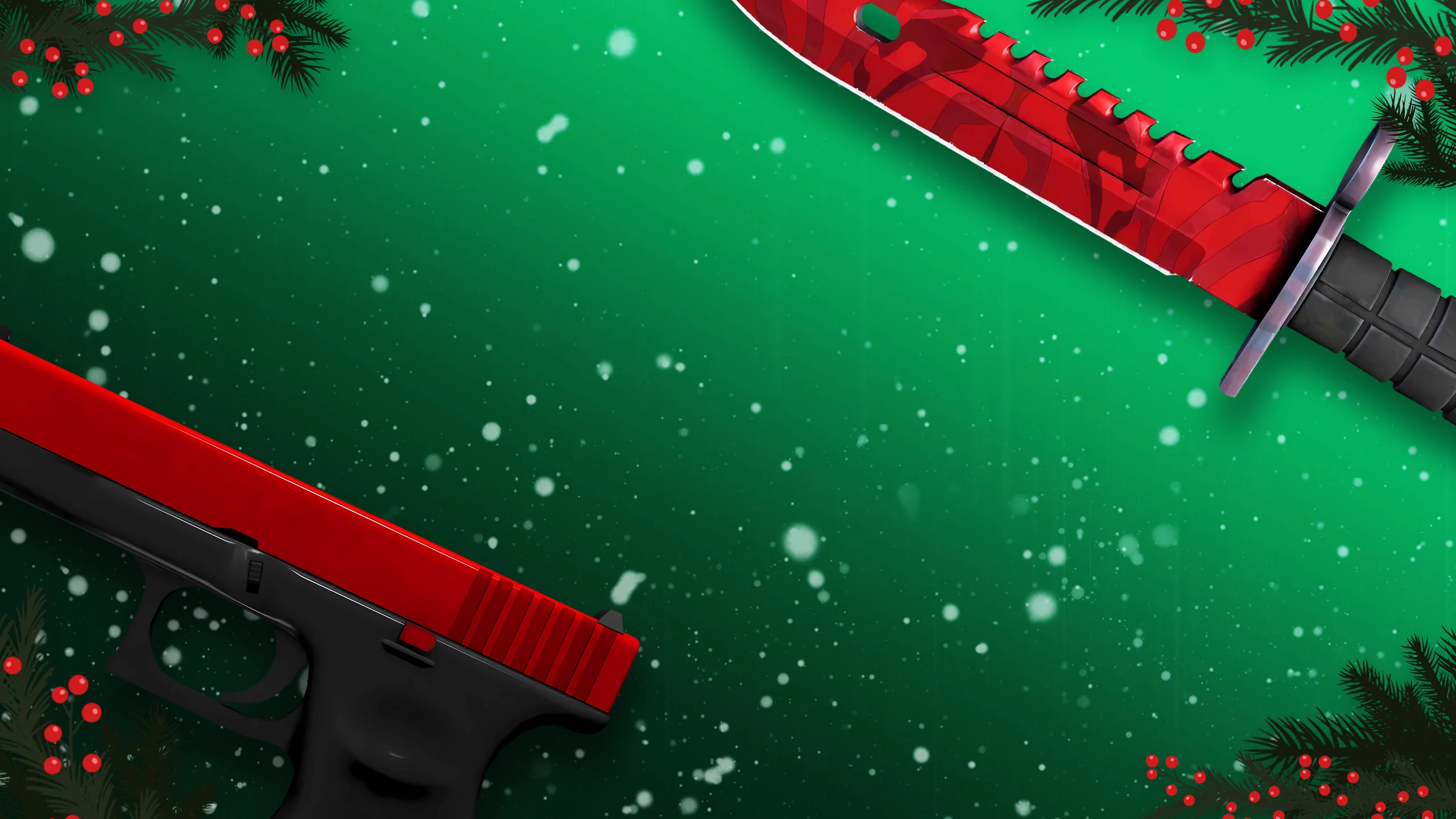Guide
Red Skins to Knife Trade Ups! - Everything you need to know
Valve’s latest Steam Market update allows players to trade five red skins for a gold item, introducing a gamble-free path to knives and gloves.
Written by Marcel
Knives
Guide
Valve’s New Trade-Up Update Shakes the Steam Market
Valve has released one of the most significant changes to the Steam Market in recent years. Players can now trade five red rarity skins for a gold item, allowing them to obtain knives and gloves directly without opening cases. This marks a major shift in how valuable skins can be acquired, and the community has been quick to react.

How the New Trade-Up System Works
The new trade-up mechanic is straightforward. Any red rarity skin from a case that originally offered a chance to get a gold item can now be used. When five reds from the same collection are combined, the result is a guaranteed gold item from that collection.
For example, combining five reds from the Fever Dream collection will produce a Fever knife. StatTrak items can also be used in the process, although StatTrak gloves have not been observed yet.
Older red skins have gained significant value under this new system. Skins such as the M4 X-Ray, which were once inexpensive, can now be traded up for highly valuable gold items like Karambits. Float values still play an important role, meaning that players cannot simply combine low-float reds to guarantee factory-new results.

Limitations on Trade-Ups
Collection skins cannot currently be used for trade-ups. This restriction is unexpected, as Valve has recently placed strong emphasis on collections such as the Armory and Genesis series. Despite their importance, these items remain excluded from the new gold trade-up system.
This limitation has been confirmed through player testing, which showed that expensive collection skins cannot be used for gold trade-ups. Some users attempting to test these limits even reported temporary Steam Market locks during their attempts.
Why Valve Introduced This Change
The purpose behind this update appears to be economic balance. In the short term, the change increases the value of red and pink rarity skins while decreasing the prices of many gold items such as knives and gloves.
Previously, certain golds were so expensive that they were rarely listed on the Steam Market. Allowing players to trade up into these items makes them more accessible and encourages greater market activity. The update also introduces a fully gamble-free method to obtain knives, which aligns with Valve’s apparent efforts to move away from systems resembling gambling.
Long-Term Market Implications
The long-term impact of this update remains uncertain. Valve’s decision suggests an awareness of the need to reduce dependence on case-opening mechanics to comply with international gambling regulations. The key question now is whether new cases and gold items will continue to appear, or if future content will shift entirely toward Armory-style systems with trade-up integration.
Since the update is still recent, the market continues to fluctuate as players adjust to the new possibilities. The overall direction of prices will likely take several weeks or months to stabilize.
Impact on the Trading Community
This update does not signal the end of trading. While the initial rollout contained bugs, including issues with new golds not being tradable, Valve quickly resolved these problems with a follow-up patch.
The update has, however, created a significant market shift. High-end knives and gloves are expected to decrease in price, and it is unlikely that many will continue to sell for over 10,000 dollars. Rare variants, such as blue gems, may remain valuable exceptions.
In contrast, skins and cases—particularly older red and pink items—have experienced sharp increases in value. The entire economy is currently adjusting, with prices fluctuating as supply and demand rebalance.
Conclusion
Valve’s new trade-up system represents a major turning point for the Steam Market and the wider Counter-Strike skin economy. It provides players with a guaranteed path to gold-tier items, revitalizes older skins, and dramatically alters market dynamics.
Although it remains to be seen how prices will settle, this update has already reshaped the landscape of skin trading. Whether this change leads to a more stable, accessible market or sets the stage for even greater volatility will depend on how Valve continues to develop the system in the months ahead.


